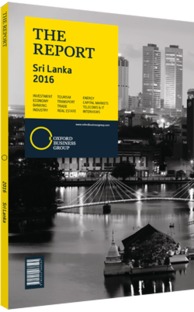Investment is set to receive a boost from Sri Lanka's National Agricultural Policy
Although the agriculture sector has been central to Sri Lankan livelihoods and cultural identity for centuries, it has suffered in recent years from overlapping and sometimes contradictory government policies prone to changing with new political administrations.
Of particular concern is the lack of public investment in mechanisation and technological innovation. This has translated into weak labour productivity ratios compared to other sectors and climate change vulnerability. However, newly elected President Maithripala Sirisena has pledged to address these issues with a new NAP, which aims to improve technological uptake in a bid to boost productivity and reduce the effects of climate change, creating new space for investment in the sector.
Productivity Challenges
According to a June 2015 report by local think tank Verité Research, several factors have contributed to the sector’s declining productivity in recent years. Previous administrations have been prone to over-subsidising certain critical export segments, while farmers have frequently both overused and underused inputs including fertiliser, due in large part to a lack of training and education.
According to the Department of Census and Statistics, 28.5% of Sri Lanka’s labour force works in agriculture. However, this cohort contributes just 10.1% to GDP, translating into 1% of the labour force contributing just 0.4% of GDP, compared to 1.2% for industrial workers and 1.3% for service workers. A primary constraint is that plantations are heavily unionised, with a political component. This has brought challenges, as wages are often negotiated without productivity being factored in, causing Sri Lanka to lag behind lower-cost countries in terms of output per worker. “Union leaders traditionally come from politics and stir up a majority of the workforce, which has made Sri Lanka’s cost of production very high. This is unsustainable,” Rohan Fernando, chairman of the Tea Exporters Association, told OBG. At the same time, an average of 1.5% of the total agricultural workforce has been leaving the sector annually since 2011, with fewer young people seeking employment in the sector while older generations of farmers retire. In addition, many of Sri Lanka’s crops are ageing, resulting in diminished yields. A wave of plantation privatisations in the 1990s has not fully solved the problem.
Climate Risk
Climate change and inclement weather also pose a significant challenge to food security and agricultural development in Sri Lanka. According to an Asian Development Bank (ADB) report, widespread degradation of the country’s coastal and agricultural resources caused by climate change could cost its economy more than 6% of GDP within the next 85 years. Any increase in extreme storms, droughts or rainfall variability already have a major impact on agricultural production, as seen in mid-2014, when drought affected rice and rubber production. Floods in late 2014 also affected at least 1.1m people in the Northern and Eastern Provinces, resulting in significant crop losses, with the government allocating $3.8m to relief efforts. The ADB has recommended investing further in new technology, including drought-, pest- and saline-resistant seeds.
NAP
Recognising the challenges facing long-term growth in the sector, the Sirisena administration announced plans to create the NAP in March 2015, while agriculture minister Duminda Dissanayake said in April that the ministry’s policies will emphasise mechanisation, technology and youth employment. Increasing investment in the sector is also a top priority, with the policy stating that the government will seek to encourage private sector investment, particularly in seed and planting material production, research and development, human resources development, post-harvest management, marketing, export promotion and entrepreneurship. This investment will be particularly encouraged in the burgeoning floriculture, horticulture and spice segments.
You have reached the limit of premium articles you can view for free.
Choose from the options below to purchase print or digital editions of our Reports. You can also purchase a website subscription giving you unlimited access to all of our Reports online for 12 months.
If you have already purchased this Report or have a website subscription, please login to continue.

